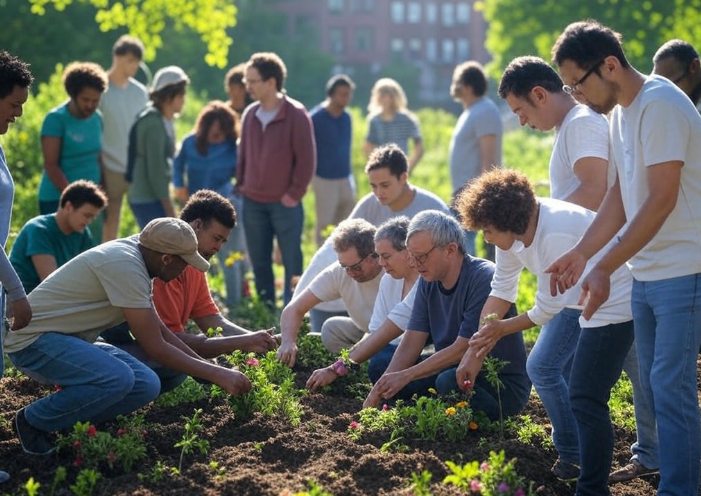Any Space scientist, Who spent years pondering the mysteries of the cosmos and humanity’s place within it. One of the most fascinating experiments to bridge the gap between Earth and the stars is NASA’s Twins Study—a groundbreaking investigation into how the human body responds to the extreme environment of space. Conducted between 2015 and 2016, this study leveraged a rare opportunity: identical twin astronauts Scott and Mark Kelly. Scott spent 340 days aboard the International Space Station (ISS), while Mark remained on Earth as a control subject. The results, published in 2019, offer a treasure trove of insights into how spaceflight reshapes our biology—and what it means for future missions to the Moon, Mars, and beyond.
A Unique Experiment in the Stars
The Twins Study is a triumph of scientific ingenuity. Identical twins share nearly identical DNA, making them perfect natural controls for studying environmental impacts. Scott Kelly’s year-long mission provided an unprecedented chance to observe how prolonged spaceflight affects the human body, with Mark Kelly serving as the Earth-bound baseline. Over the course of the study, researchers collected data on everything from gene expression to cognitive performance, painting a detailed picture of space adaptation at the molecular, physiological, and psychological levels.
What makes this study so compelling isn’t just its design, but its implications. As humanity sets its sights on deep-space exploration, understanding how our bodies cope with microgravity, cosmic radiation, and isolation is critical. The Twins Study isn’t just about two brothers—it’s about the future of our species as a spacefaring civilization.
The Body in Flux: Key Findings
One of the most striking discoveries was how Scott’s body adapted at the genetic level. Spaceflight triggered changes in gene expression—essentially, the way his DNA instructions were “read” and acted upon. These changes affected pathways related to immune function, DNA repair, and bone formation. On Earth, Mark’s gene expression remained stable, highlighting how the space environment acts as a biological stressor. Intriguingly, most of Scott’s gene expression returned to normal after his return, suggesting the human body is remarkably resilient—but not all changes reversed immediately, hinting at longer-term impacts.
Another surprise came from Scott’s telomeres—the protective caps at the ends of chromosomes that shorten with age. In space, his telomeres unexpectedly lengthened, a finding that defied expectations. On Earth, telomere shortening is linked to aging and stress, so this elongation was puzzling. Was space somehow rejuvenating him? Not quite. After returning to Earth, Scott’s telomeres rapidly shortened again, and some showed signs of damage. This suggests that spaceflight might temporarily alter aging processes, but the return to gravity unravels those effects—potentially with added wear and tear.
The immune system also took a hit. Scott’s body showed signs of heightened inflammation and immune stress, likely due to cosmic radiation and microgravity. This could spell trouble for long-duration missions, where astronauts might face increased vulnerability to illness. Meanwhile, his cardiovascular system adapted to the lack of gravity by subtly shifting how blood flowed, a change that mostly normalized post-flight but underscores the challenges of keeping hearts healthy in space.
The Mind in Microgravity
Beyond the physical, the Twins Study probed the psychological toll of spaceflight. Scott’s cognitive performance—memory, reaction time, and problem-solving—was monitored throughout his mission. While he remained sharp overall, subtle declines emerged, particularly in tasks requiring spatial orientation and multitasking. Isolation, confinement, and the constant hum of the ISS likely played a role. Mark, on Earth, showed no such changes, reinforcing that these effects stemmed from the space environment.
Space scientist find this particularly sobering. Future explorers will face not just physical hurdles, but mental ones. On a multi-year mission to Mars, where real-time communication with Earth isn’t possible, maintaining cognitive health will be as vital as oxygen or water.
The Microbial Connection
One of the more unexpected revelations was the shift in Scott’s microbiome—the ecosystem of bacteria living in and on his body. In space, his gut flora diversified in ways Mark’s didn’t, possibly due to differences in diet, radiation, or stress. This matters because the microbiome influences digestion, immunity, and even mood. A healthy microbial balance could be key to keeping astronauts thriving far from home.
What It Means for the Future
The Twins Study isn’t just a snapshot of two astronauts—it’s a roadmap for humanity’s extraterrestrial ambitions. Take Mars, for instance. A round trip could take three years, exposing crews to microgravity and radiation far beyond what Scott endured. The telomere findings suggest we need to better understand how space affects aging and DNA stability. The immune shifts warn us to bolster defenses against infection. And the cognitive data remind us to design habitats that support mental well-being.
For lunar missions, like NASA’s Artemis program, the stakes are different but no less critical. The Moon’s lower gravity and radiation levels will challenge astronauts in unique ways. The Twins Study gives us a baseline to predict those effects and engineer solutions—whether through advanced shielding, tailored diets, or exercise regimens.
The Bigger Picture: Evolution in Space?
Most of the scientist can’t help but speculate about the evolutionary implications. If humans colonize other planets, how will our bodies adapt over generations? The Twins Study hints at plasticity—our ability to adjust to alien environments—but also fragility. Gene expression shifts and telomere dynamics suggest we’re not built for space, yet our resilience offers hope. Could future generations, born off-world, evolve distinct traits? It’s a question that blends science fiction with science fact, and studies like this are the first step toward an answer.
Challenges and Caveats
Of course, the Twins Study has limits. With only one subject in space, it’s a case study, not a broad sample. Scott and Mark, though twins, aren’t perfectly identical in lifestyle or health history. And a year on the ISS isn’t the same as a Mars voyage. Still, its depth—spanning genomics, proteomics, and more—makes it a goldmine for hypothesis-building. Future research, like multi-astronaut studies or simulated Mars missions on Earth, will build on this foundation.
A Personal Reflection
As someone who’s stared at star charts and pored over data, I find the Twins Study humbling. It’s a reminder that space isn’t just “up there”—it’s a mirror reflecting who we are as a species. Scott and Mark Kelly, in their own way, embody that duality: one reaching for the stars, the other grounding us in our terrestrial roots. Their story isn’t just about science—it’s about curiosity, courage, and the relentless drive to understand ourselves in the vastness of the universe.
Conclusion
NASA’s Twins Study is a milestone in space science, revealing the surprising ways our bodies adapt—and struggle—in space. From gene expression to telomeres, immunity to cognition, it’s a testament to human endurance and a call to action. As we prepare for the next giant leap, this research lights the way, ensuring that when we step onto alien soil, we do so not just as explorers, but as a species ready to thrive. The cosmos awaits, and thanks to studies like this, we’re one step closer to calling it home.



